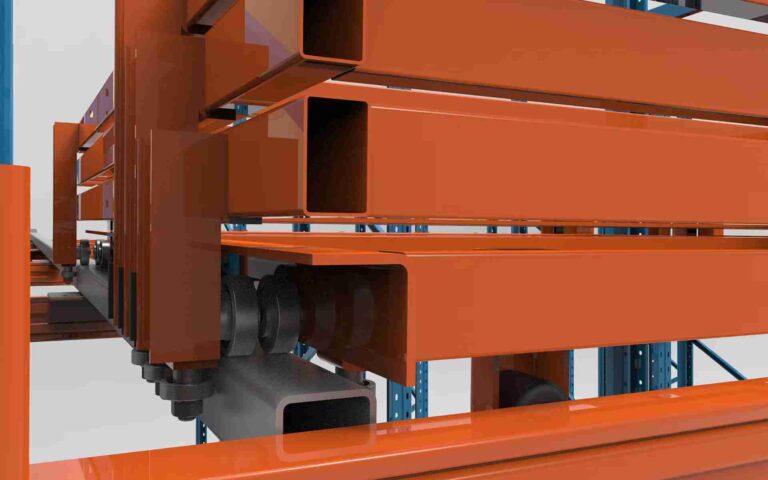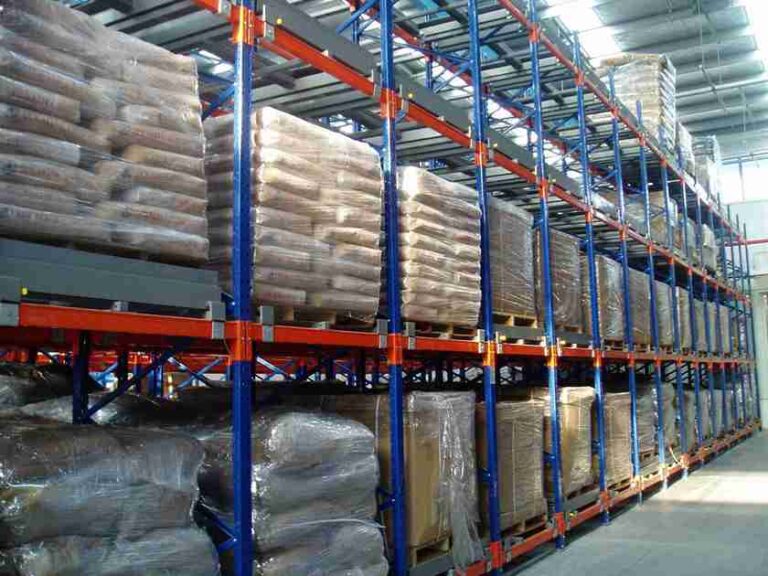📐 "First 50 Enterprise Queries Get Custom 3D Warehouse Design" Plan

Introduction: Revolutionizing Warehouse Storage with Push Back Pallet Racking
In an era where every square foot of warehouse space translates to operational costs and efficiency, push back pallet racking has emerged as a game-changing storage solution. Unlike traditional racking systems, push back pallet racking maximizes storage density while maintaining accessibility—making it an ideal choice for distribution centers, manufacturing facilities, and cold storage warehouses.
This in-depth guide explores:
-
How push back pallet racking works and why it outperforms other systems
-
The structural advantages that enhance storage capacity
-
Real-world applications across various industries
-
Cost-benefit analysis and long-term ROI
-
Best practices for installation, maintenance, and safety
By the end, warehouse managers and logistics professionals will understand why push back pallet racking is the smartest investment for optimizing storage space without compromising workflow efficiency.

1. How Push Back Pallet Racking Works: A Deep Dive
Push back pallet racking is a high-density storage system that operates on a Last-In, First-Out (LIFO) principle, allowing multiple pallets to be stored in a single lane. Here’s how it functions:
Mechanics of Push Back Pallet Racking
-
Pallets are loaded onto inclined carts or rails from the front.
-
Each new pallet pushes back the previous one, creating a dynamic storage lane.
-
When unloading, the next pallet automatically rolls forward, minimizing forklift movement.
Key Structural Components
-
Heavy-Duty Steel Frames: Engineered to support up to 5,000 lbs per pallet position.
-
Roller or Wheel-Based Carriages: Ensure smooth pallet movement.
-
Stopper Arms: Prevent pallets from sliding out unintentionally.
This system is particularly effective for beverage distributors, automotive parts warehouses, and bulk retail storage, where space optimization is critical.
2. Push Back Pallet Racking vs. Competing Storage Systems
To determine whether push back pallet racking is the best fit, let’s compare it to other popular warehouse storage solutions.
A. Push Back Pallet Racking vs. Selective Pallet Racking
| Feature | Push Back Pallet Racking | Selective Pallet Racking |
|---|---|---|
| Storage Depth | 2-6 pallets deep | 1-2 pallets deep |
| Access Method | LIFO (Last-In, First-Out) | Direct access (FIFO or LIFO) |
| Aisle Space Needed | Minimal (fewer aisles) | More aisles required |
| Best For | High-density, uniform SKUs | Fast-moving, diverse inventory |
B. Push Back Pallet Racking vs. Drive-In Racking
-
Drive-in racking allows FIFO access but requires forklifts to enter the structure, increasing safety risks.
-
Push back pallet racking eliminates forklift entry, reducing accidents and improving efficiency.
C. Push Back Pallet Racking vs. Pallet Flow Racking
-
Pallet flow racking uses gravity rollers for FIFO access, ideal for perishable goods.
-
Push back pallet racking is better suited for non-perishable, uniform loads where LIFO retrieval is acceptable.
3. Top 5 Benefits of Push Back Pallet Racking
Why are leading warehouses switching to push back pallet racking? Here are the key advantages:
A. Unmatched Storage Density
-
Reduces aisle space by 50% compared to selective racking.
-
Stores up to 60% more pallets in the same footprint.
B. Faster Load/Unload Cycles
-
No forklift entry required, speeding up operations.
-
Pallets automatically slide forward, reducing retrieval time.
C. Lower Operational Costs
-
Fewer forklift movements mean reduced labor and fuel expenses.
-
Higher storage capacity lowers cost per pallet.
D. Enhanced Safety & Durability
-
No forklift entry minimizes collision risks.
-
Heavy-duty steel construction ensures long-term stability.
E. Scalable for Future Growth
-
Adjustable beam heights accommodate changing inventory needs.
-
Modular design allows for easy expansion.
4. Ideal Industries for Push Back Pallet Racking
Several industries see dramatic efficiency improvements with push back pallet racking:
A. Food & Beverage Distribution
-
Perfect for beverage warehouses storing uniform pallets.
-
Cold storage facilities benefit from high-density storage.
B. Automotive & Manufacturing
-
Stores bulk raw materials efficiently.
-
Ideal for auto parts warehouses with high SKU volumes.
C. Retail & E-Commerce Fulfillment
-
Supports high-volume SKU storage in distribution centers.
-
Reduces picking time and improves order fulfillment speed.
D. Pharmaceuticals & Chemicals
-
Safely stores non-perishable medical supplies.
-
Maximizes space in regulated storage environments.
5. Structural Design & Load Capacity Considerations
Before installing push back pallet racking, warehouse planners must evaluate:
A. Frame & Beam Strength
-
Heavy-duty steel frames support up to 5,000 lbs per pallet.
-
Adjustable beam levels accommodate varying load heights.
B. Cartridge & Rail Systems
-
Roller-based carts for smooth pallet movement.
-
Wheel-based designs for heavier loads.
C. Floor & Forklift Requirements
-
Requires level flooring for optimal operation.
-
Forklift reach and capacity must align with system specs.
6. Installation & Maintenance Best Practices
To ensure long-term performance, follow these guidelines:
A. Professional Installation
-
Certified installers ensure structural integrity.
-
Proper anchoring prevents rack movement.
B. Routine Inspections
-
Check for cartridge wear and tear.
-
Inspect beam connectors for stability.
C. Operator Training
-
Train forklift drivers on proper loading techniques.
-
Avoid overloading pallets beyond capacity.
7. Cost Analysis & ROI of Push Back Pallet Racking
Is push back pallet racking worth the investment? Let’s break it down:
A. Initial Investment
-
Higher upfront cost than selective racking.
-
Lower long-term costs due to space savings.
B. Operational Savings
-
Reduced labor costs (fewer forklift movements).
-
Higher storage capacity = lower cost per pallet.
C. Payback Period
-
Most businesses see ROI within 2-3 years.
8. The Future of Push Back Pallet Racking
Emerging trends include:
-
Automated retrieval systems for faster operations.
-
Hybrid designs combining push back and pallet flow.
-
IoT-enabled monitoring for predictive maintenance.
Conclusion: Is Push Back Pallet Racking Right for Your Warehouse?
Push back pallet racking is a high-density storage solution that maximizes space, improves efficiency, and reduces operational costs. It’s ideal for warehouses with uniform SKUs, limited space, and high-volume storage needs.
If you’re considering push back pallet racking, evaluate your inventory flow, space constraints, and budget to determine if it’s the best fit.
FAQs About Push Back Pallet Racking
1. Can push back pallet racking be used for FIFO inventory?
No, push back pallet racking operates on a LIFO system. For FIFO, consider pallet flow racking.
2. What is the maximum depth for push back pallet racking?
Most systems support 2-6 pallets deep, depending on design.
3. Does push back pallet racking require special forklifts?
No, standard counterbalance or reach forklifts work, but proper training is essential.
4. How long does installation take?
Typically 2-4 weeks, depending on warehouse size.
5. Can push back pallet racking be reconfigured later?
Yes, beams and carts can be adjusted for changing needs.




